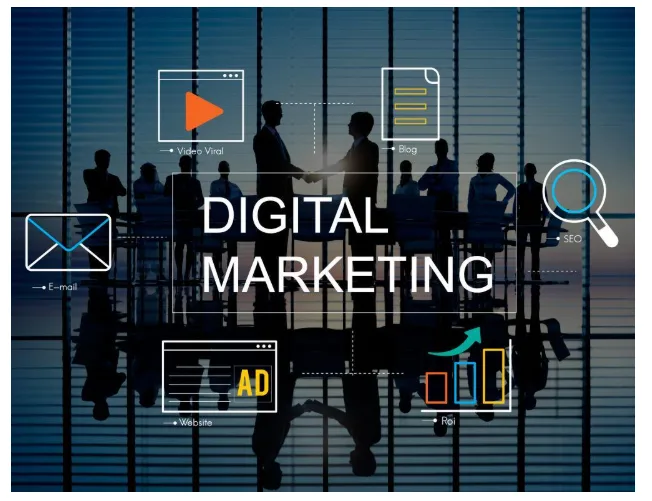The Future Of Digital Marketing: Trends Agencies Should Not Ignore In 2025
Digital marketing is changing fast, and it is faster than most businesses can keep up with. New platforms, new consumer behaviors, and new tools are modifying how people shop, explore, and connect with brands. For agencies, the year 2025 is not the year to play it safe. It is about rethinking strategies and leaning into what is changing to help clients stay one step ahead.
Here are some of the big shifts that agencies must pay attention to this year and how they can prepare for them.
Search Is Turning Into Conversations
Google and other platforms are turning from lists of links to complete answers powered by AI. Instead of typing a query and clicking through multiple results, people are now increasingly getting their answers directly in search. For agencies, it means SEO is not only about ranking anymore but also about being part of the answer.
Businesses that publish credible, helpful, and clear content have the best shot at being featured in AI-generated summaries. Consider expert-backed articles, Q&A-style blogs, and content that is easy to summarize or quote. If you have been treating content as a checkbox, then the year 2025 is the time to rethink it. The winners will be the businesses that provide clarity and not just keywords.
Privacy Rules Are Changing the Game
Ben Austin, CEO of Absolute Digital Media, said, “You may have noticed third-party cookies disappearing, but they are not gone yet. Browsers are now giving people more control over their data, and regulators have stricter rules in place. Agencies cannot wait for the perfect replacement.
The year 2025 is to double down on first-party data, which is the information that brands collect directly from their customers. Loyalty programs, email signups, simple on-site tracking, and SMS lists are becoming gold. The more you know about your own consumers, the less you will rely on outside platforms to target them.”
Data Collaboration Is Becoming Normal
In the past, the brands and publishers used to keep their customer information and data separate. Now, the “clean rooms” are making it possible to safely match data sets without even giving away personal details. That means advertisers can easily understand the customer journey better. For instance, which ads will actually lead to a purchase?
For agencies, this can be a huge opportunity since clients will pay a premium for clarity. When agencies build expertise in data collaboration tools, it will set them apart. It is particularly when proving ROI is more complicated than ever.
Retail Media Keeps Growing
Shopping ads are no longer about only Amazon or Google. Almost all major retailers have their own ad network now. These may include pharmacies, grocery stores, or even delivery apps. Brands love this because they can link ads directly to sales. Although the growth in retail media has slowed compared to the early rise, it is still one of the trending channels.
Agencies should look beyond just Amazon and explore where target audiences actually shop. Running ads on Walmart or Instacart, for instance, could deliver better results for particular products than the big platforms.
Social Commerce Is Exploding
TikTok Shop has shown that people are willing to purchase directly from their feeds. Creator-driven bundles, one-click checkouts, and live shopping inside social apps are becoming the new normal.
For agencies, this means you cannot treat social media as just a place for engagement or business awareness anymore. It is a storefront. The best-performing campaigns in the year 2025 will diminish the line between shopping and entertainment. Imagine a creator unboxing a product and viewers buying it in real time.
Messaging Apps Are the New Storefronts
In most countries, Messenger, WhatsApp, and similar apps are where customers spend most of their time. Now these platforms are adding booking, shopping, and payment features. Rather than clicking through a website, a customer might place an order directly inside a chat.
Agencies that can design simple and useful chat experiences will help brands stay unique. These may include automated support or guided product recommendations. Messaging is more personal, convenient, and fast, making it among the most underused channels for sales.
AI-Driven Creativity Is Common
Some years ago, AI tools were a novelty. Now, they are a part of the creative process. Businesses are using AI to generate ad copy, product mockups, social posts, and even video ads. But here is the catch: AI is not replacing creativity, but it is speeding it up.
Agencies that thrive will be the ones who utilize AI to test more ideas, build more variations, and learn faster. Instead of developing five different ad versions, you may create fifty and quickly see which ones resonate. The value is not in the AI tool itself, but it is in the strategy and human creativity behind it.
Regulations Are Shaping Marketing
The Digital Markets Act in Europe and similar regulations elsewhere are forcing major platforms to change how they operate. These platforms may include Meta, Google, Apple, and others. From app store rules to how data is shared, these updates influence everything from ad placements to reporting.
Agencies must keep an eye on these changes and help clients adjust quickly. Waiting until a campaign breaks is not an option. A proactive strategy that reviews policies regularly and tests new compliance-friendly approaches will save stress and time later.
Measuring Success Demands Multiple Lenses
The days when you could just look at one number and know if your campaign worked are gone. Attribution is messier than ever between AI-led search and privacy changes. The smart move you can make is to combine different methods.
These may include platform reports, experiments, and marketing mix modelling. It may not give you the one perfect answer, but it will paint a clearer picture of what is really driving results. Agencies that help customers understand the “bigger picture” will always win trust.
Content Needs to Be Built for Answers
With AI-driven search, the type of content that works is transforming. Prolonged blogs stuffed with keywords will not cut it anymore. What people and AI tools want are useful, clear, and structured answers. It means:
- Step-by-step guides that people can easily follow
- Short definitions that explain terms simply
- Expert-backed insights that build credibility
The main goal is to become the go-to source so that when AI pulls answers, your content is what comes up.
Agencies Must Think About Customer Moments
The old traditional way of dividing teams by channel does not reflect how customers move anymore. The old way is about paid ads, SEO, and social. People now jump from Google to WhatsApp to TikTok before they buy anything.
Agencies that structure around “moments” rather than channels will build smoother journeys. Consider stages like discovery, consideration, purchase, and loyalty. Each stage requires its own ad creative, measurement strategy, and data.
Conclusion
2025 is not about chasing every shiny new platform. It is about seeing the bigger shifts like AI changing discovery, social becoming a store, video becoming interactive, and privacy reshaping targeting. Moreover, it is also about building strategies that connect them. The agencies that thrive will not be the ones with the expensive tools but the ones that stay human. They include creating content that is genuinely useful, helping brands build trust, and designing experiences that feel personal in the changing digital world.



